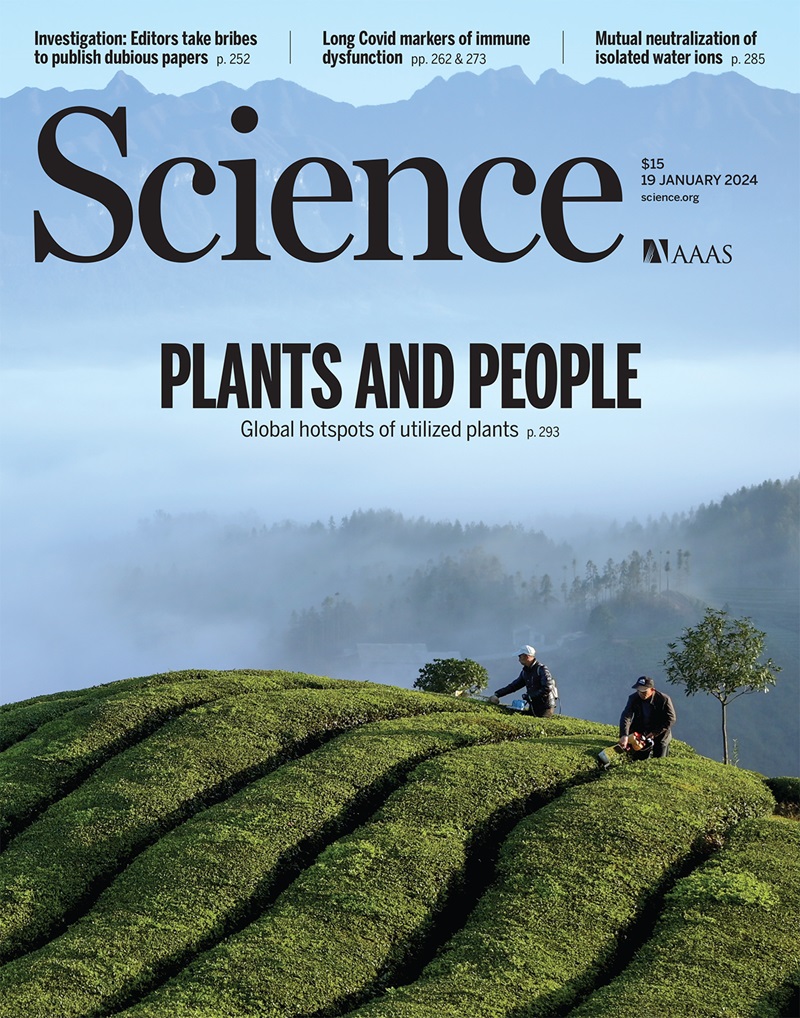Polyglycine-mediated aggregation of FAM98B disrupts tRNA processing in GGC repeat disorders
IF 45.8
1区 综合性期刊
Q1 MULTIDISCIPLINARY SCIENCES
引用次数: 0
Abstract
Aggregation-prone polyglycine-containing proteins produced from expanded GGC repeats are implicated in an emerging family of neurodegenerative disorders. In this study, we showed that polyglycine itself forms aggregates that incorporate endogenous glycine-rich proteins, including FAM98B, a component of the transfer RNA (tRNA) ligase complex (tRNA-LC) that harbors the most glycine-rich sequence in the human proteome. Through this glycine-rich intrinsically disordered region (IDR), polyglycine sequesters and depletes the tRNA-LC, disrupting tRNA processing. Accordingly, patient tissues revealed aggregate-associated FAM98B depletion and accumulation of aberrant tRNA splicing intermediates. Furthermore, Fam98b depletion in adult mice caused progressive motor coordination deficits and hindbrain pathology. Our data suggest that the FAM98B glycine-rich IDR mechanistically links previously disparate neurodegenerative disorders of protein aggregation and tRNA processing.

聚甘氨酸介导的FAM98B聚集破坏GGC重复疾病中的tRNA加工
由扩展的GGC重复序列产生的易聚集的含聚甘氨酸蛋白与新出现的神经退行性疾病家族有关。在这项研究中,我们发现聚甘氨酸本身形成聚集体,结合内源性富含甘氨酸的蛋白质,包括FAM98B,这是转移RNA (tRNA)连接酶复合物(tRNA- lc)的一个组成部分,在人类蛋白质组中含有最富含甘氨酸的序列。通过这个富含甘氨酸的内在无序区(IDR),聚甘氨酸隔离并消耗tRNA- lc,破坏tRNA加工。因此,患者组织显示出与聚集体相关的FAM98B耗竭和异常tRNA剪接中间体的积累。此外,成年小鼠的Fam98b缺失导致进行性运动协调缺陷和后脑病理。我们的数据表明,FAM98B富含甘氨酸的IDR在机制上连接了以前不同的蛋白质聚集和tRNA加工的神经退行性疾病。
本文章由计算机程序翻译,如有差异,请以英文原文为准。
求助全文
约1分钟内获得全文
求助全文
来源期刊

Science
综合性期刊-综合性期刊
CiteScore
61.10
自引率
0.90%
发文量
0
审稿时长
2.1 months
期刊介绍:
Science is a leading outlet for scientific news, commentary, and cutting-edge research. Through its print and online incarnations, Science reaches an estimated worldwide readership of more than one million. Science’s authorship is global too, and its articles consistently rank among the world's most cited research.
Science serves as a forum for discussion of important issues related to the advancement of science by publishing material on which a consensus has been reached as well as including the presentation of minority or conflicting points of view. Accordingly, all articles published in Science—including editorials, news and comment, and book reviews—are signed and reflect the individual views of the authors and not official points of view adopted by AAAS or the institutions with which the authors are affiliated.
Science seeks to publish those papers that are most influential in their fields or across fields and that will significantly advance scientific understanding. Selected papers should present novel and broadly important data, syntheses, or concepts. They should merit recognition by the wider scientific community and general public provided by publication in Science, beyond that provided by specialty journals. Science welcomes submissions from all fields of science and from any source. The editors are committed to the prompt evaluation and publication of submitted papers while upholding high standards that support reproducibility of published research. Science is published weekly; selected papers are published online ahead of print.
 求助内容:
求助内容: 应助结果提醒方式:
应助结果提醒方式:


